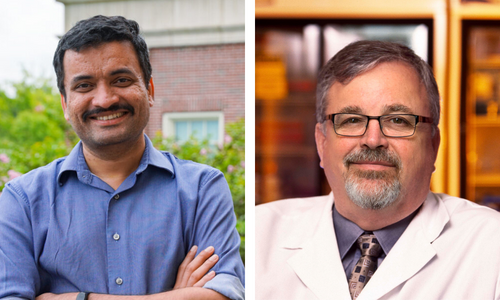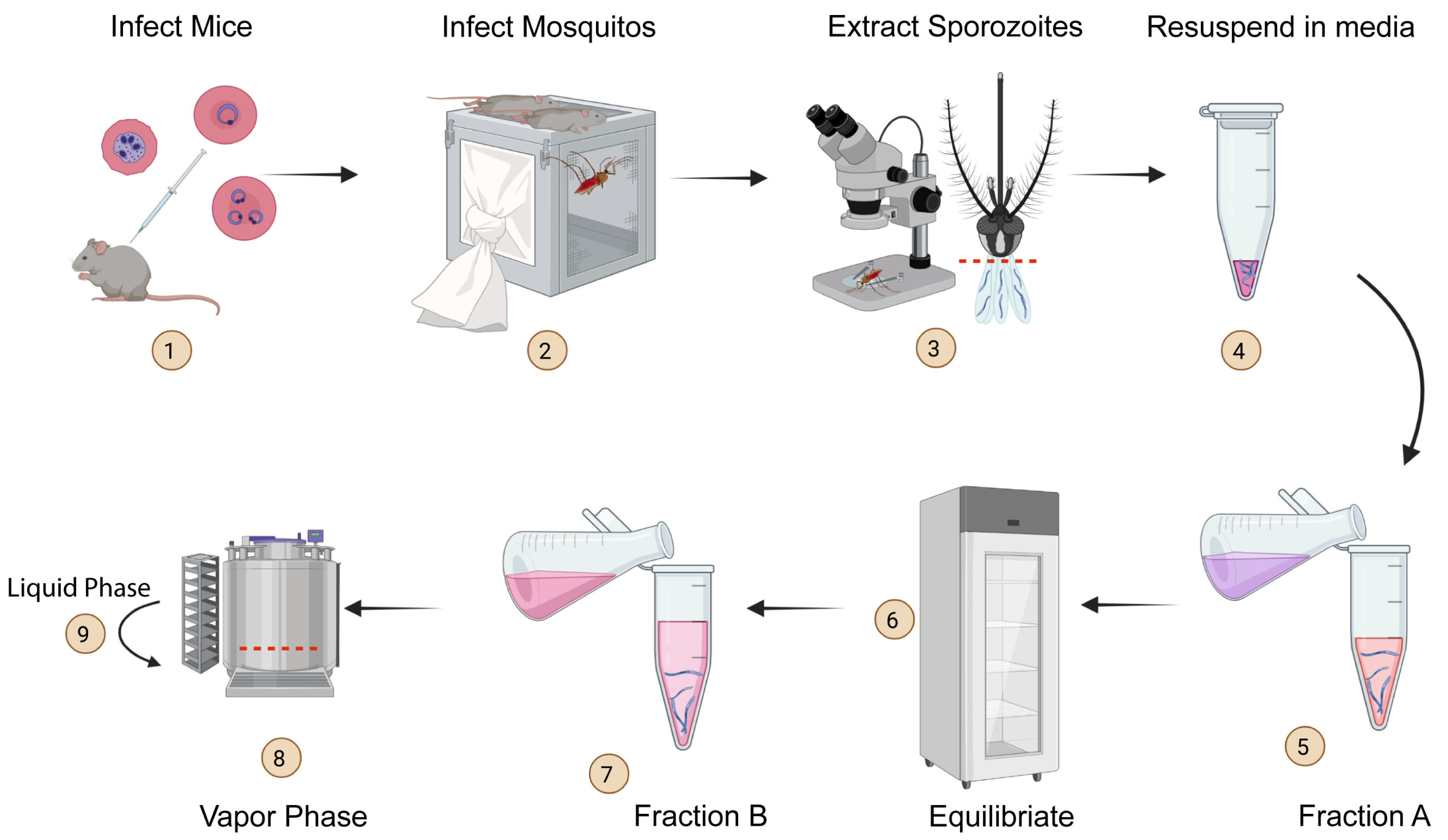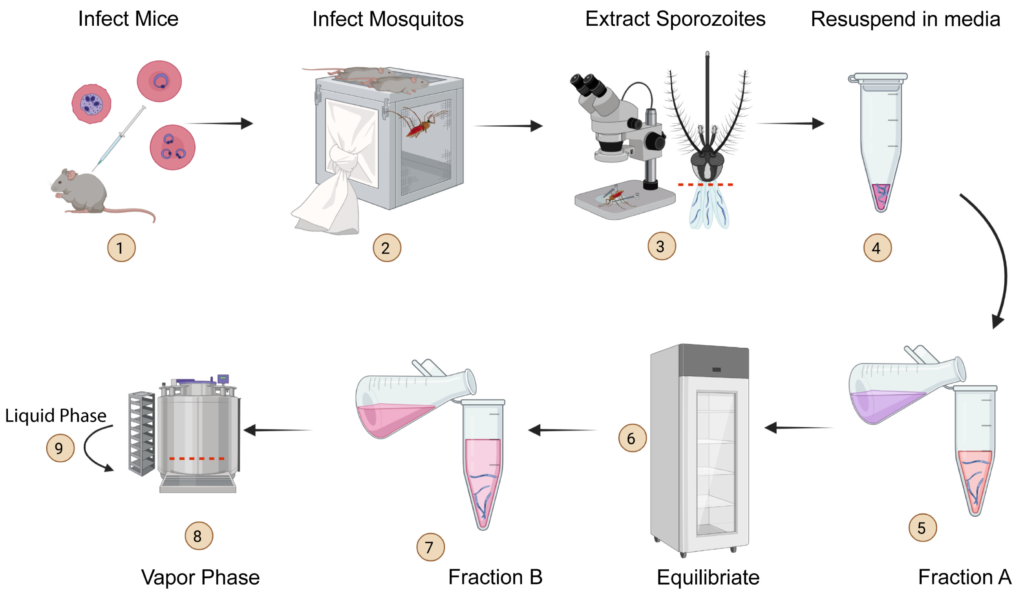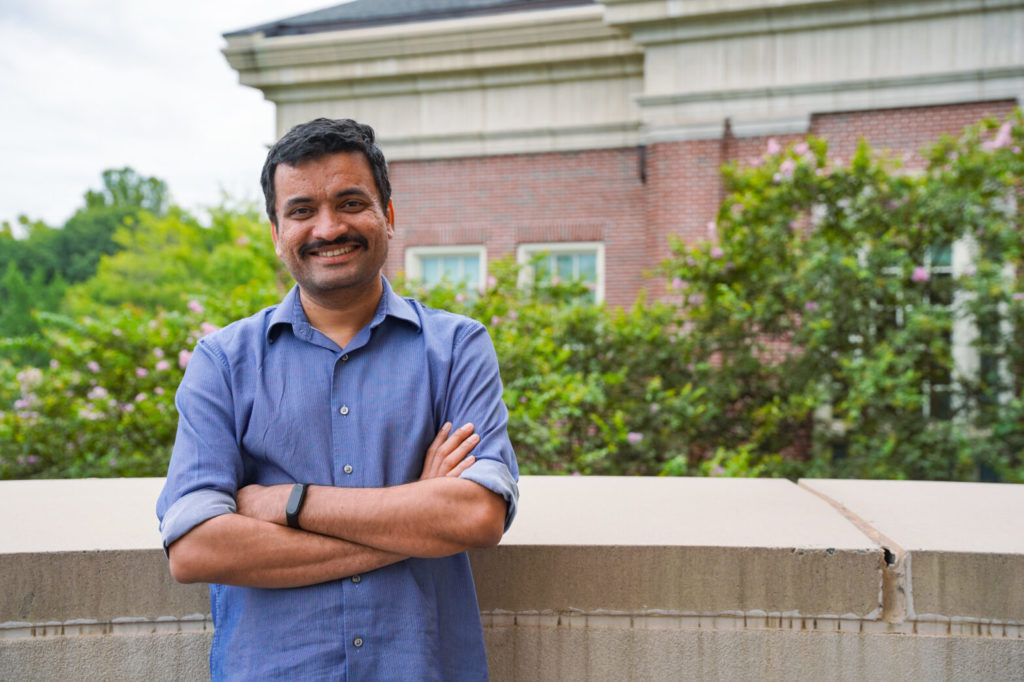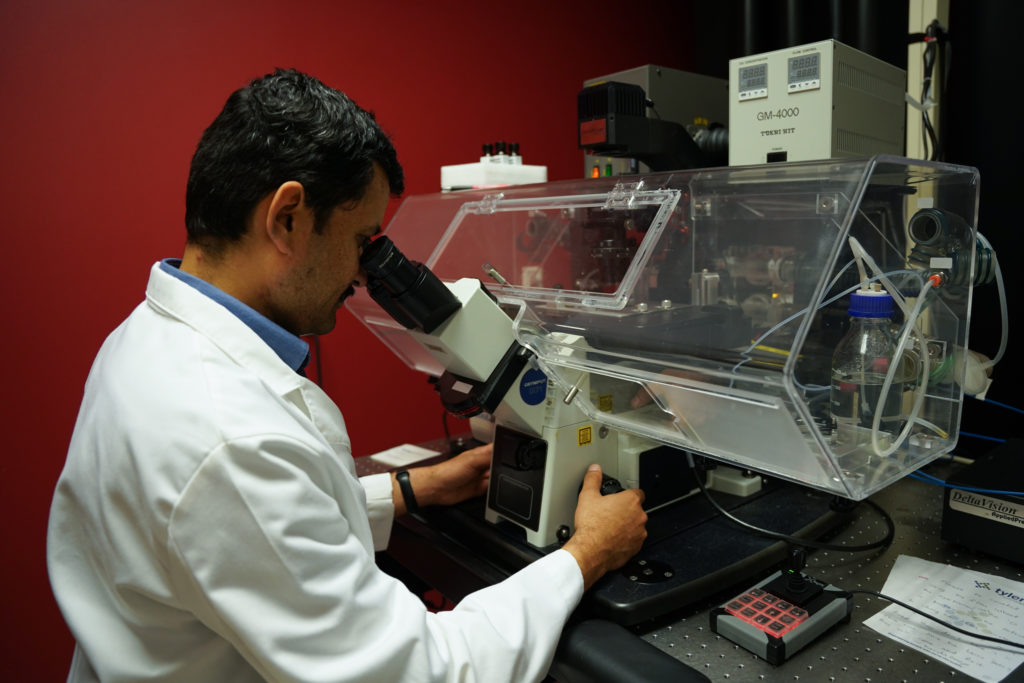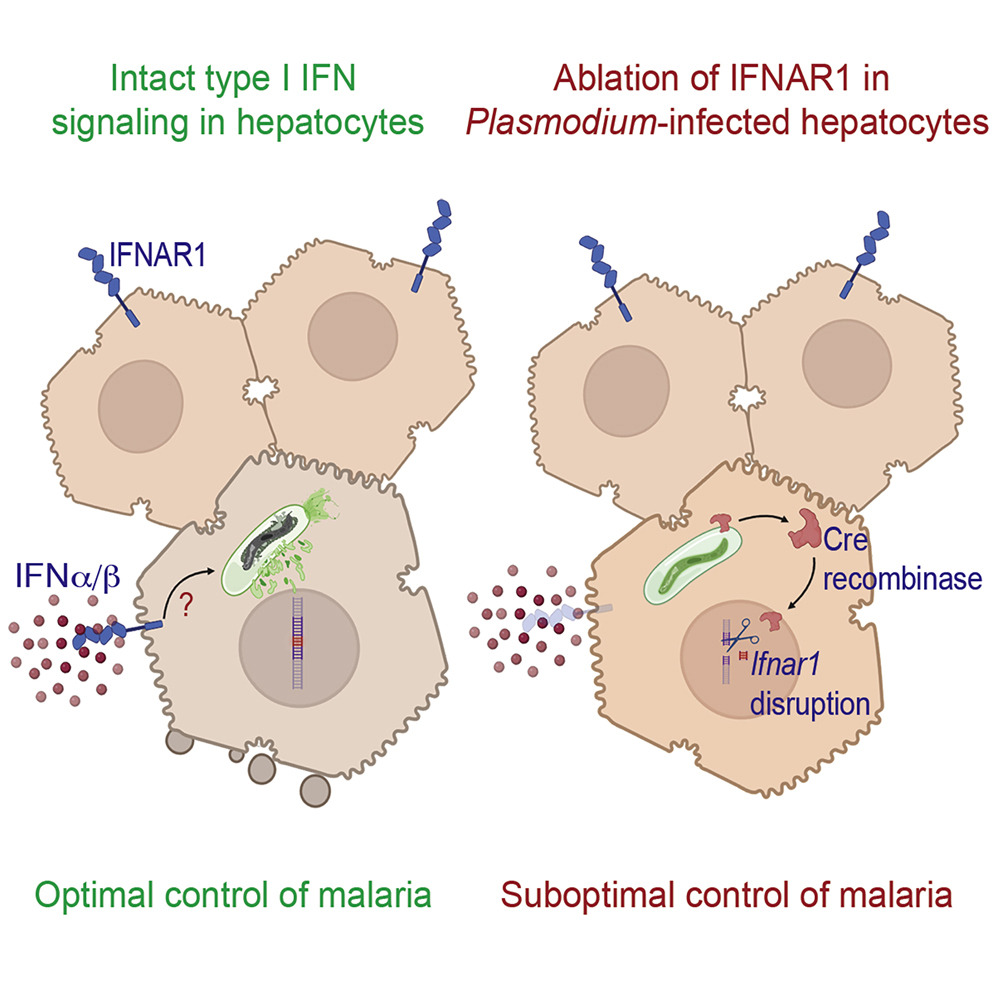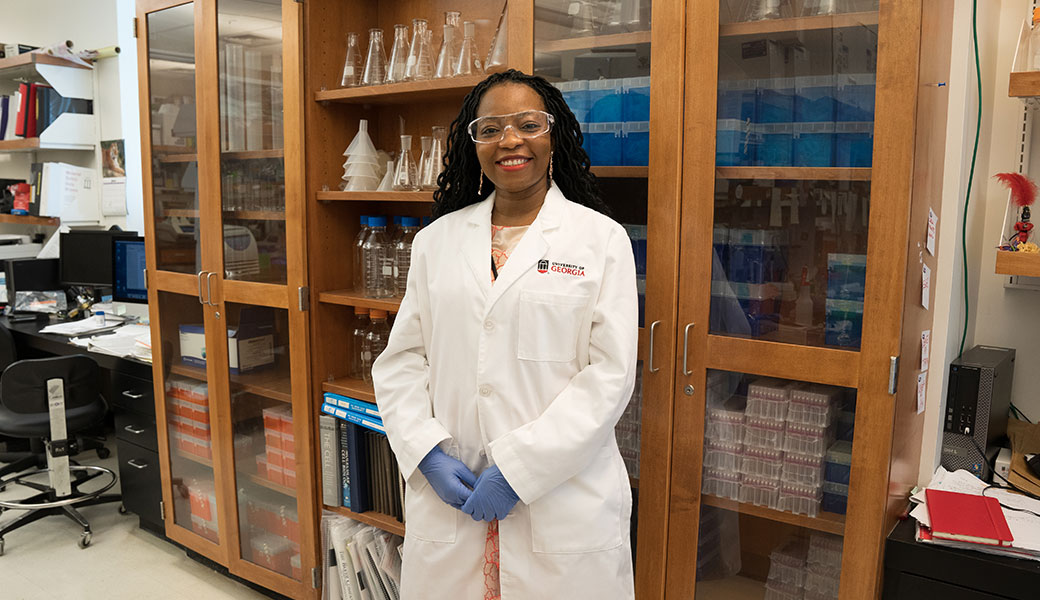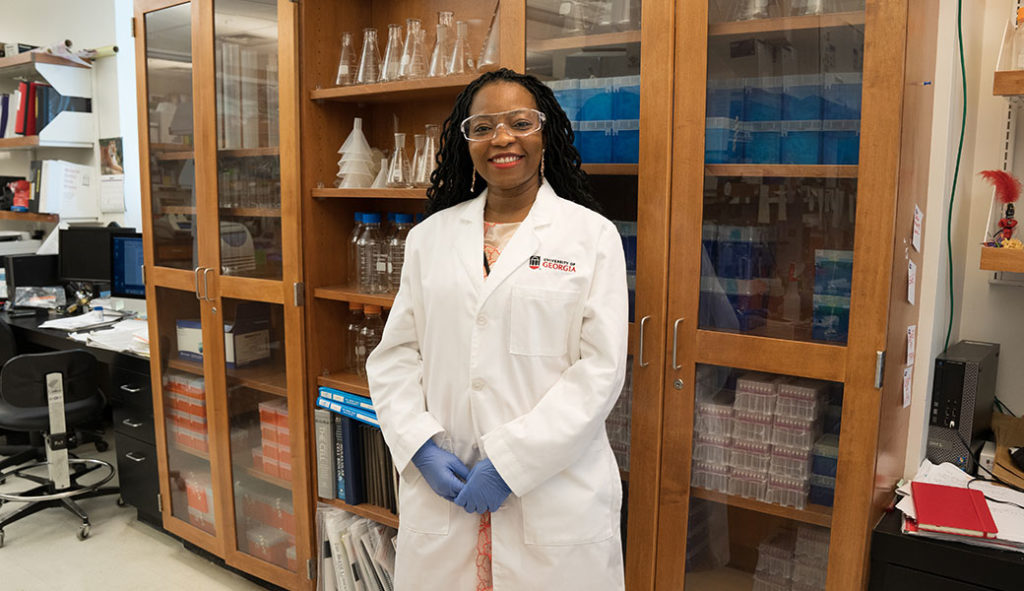AIM2 sensors mediate immunity to Plasmodium infection in hepatocytes
Malaria, caused by Plasmodium parasites is a severe disease affecting millions of people around the world. Plasmodium undergoes obligatory development and replication in the hepatocytes, before initiating the life-threatening blood-stage of malaria. Although the natural immune responses impeding Plasmodium infection and development in the liver are key to controlling clinical malaria and transmission, those remain relatively unknown. Here we demonstrate that the DNA of Plasmodium parasites is sensed by cytosolic AIM2 (absent in melanoma 2) receptors in the infected hepatocytes, resulting in Caspase-1 activation. Remarkably, Caspase-1 was observed to undergo unconventional proteolytic processing in hepatocytes, resulting in the activation of the membrane pore-forming protein, Gasdermin D, but not inflammasome-associated proinflammatory cytokines. Nevertheless, this resulted in the elimination of Plasmodium-infected hepatocytes and the control of malaria infection in the liver. Our study uncovers a pathway of natural immunity critical for the control of malaria in the liver.
Camila Marques-da-Silva, Barun Poudel, Rodrigo P Baptista, Kristen Peissig, Lisa S Hancox, Justine C Shiau, Lecia L Pewe, Melanie J Shears, Thirumala-Devi Kanneganti, Photini Sinnis, Dennis E Kyle, Prajwal Gurung, John T Harty, Samarchith P Kurup. Proc Natl Acad Sci U S A. 2023 Jan 10;120(2):e2210181120. doi: 10.1073/pnas.2210181120.

